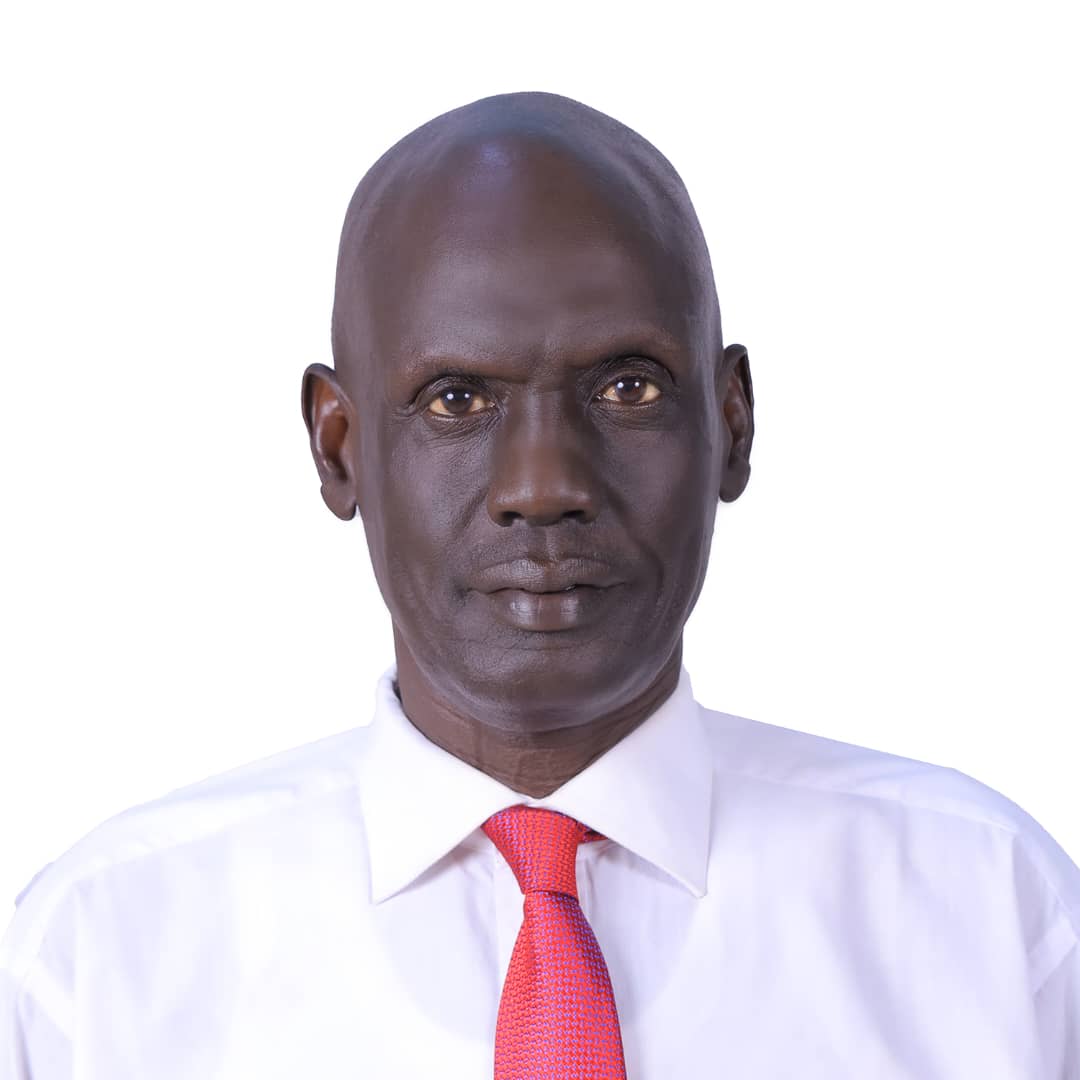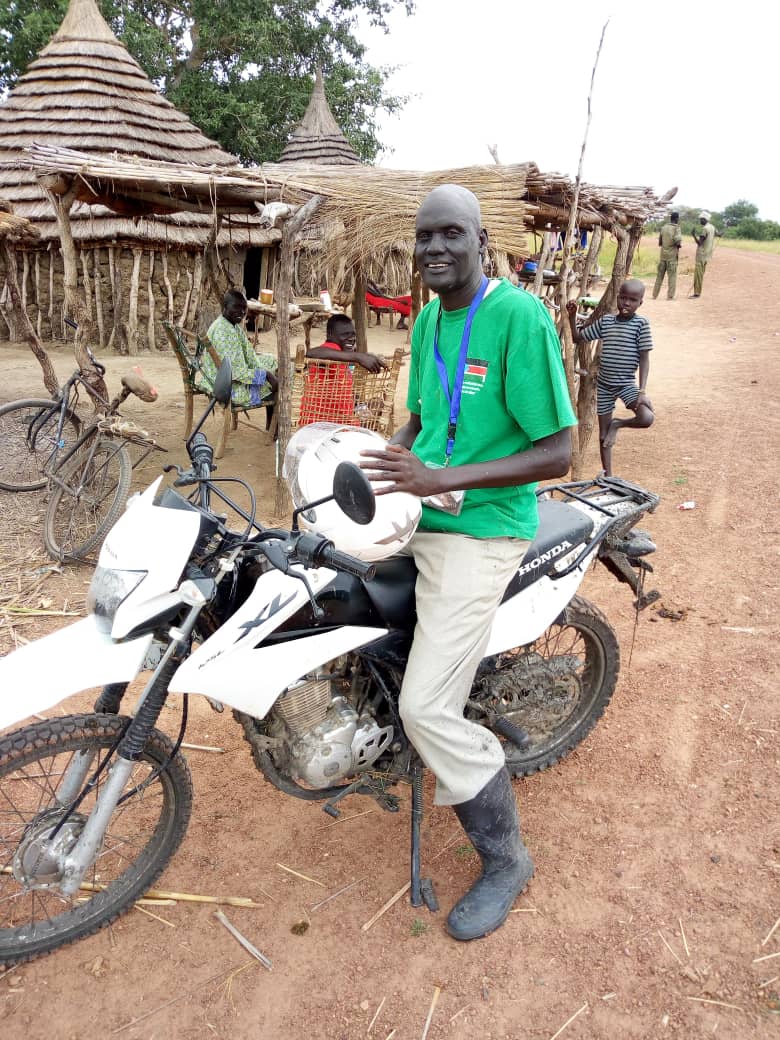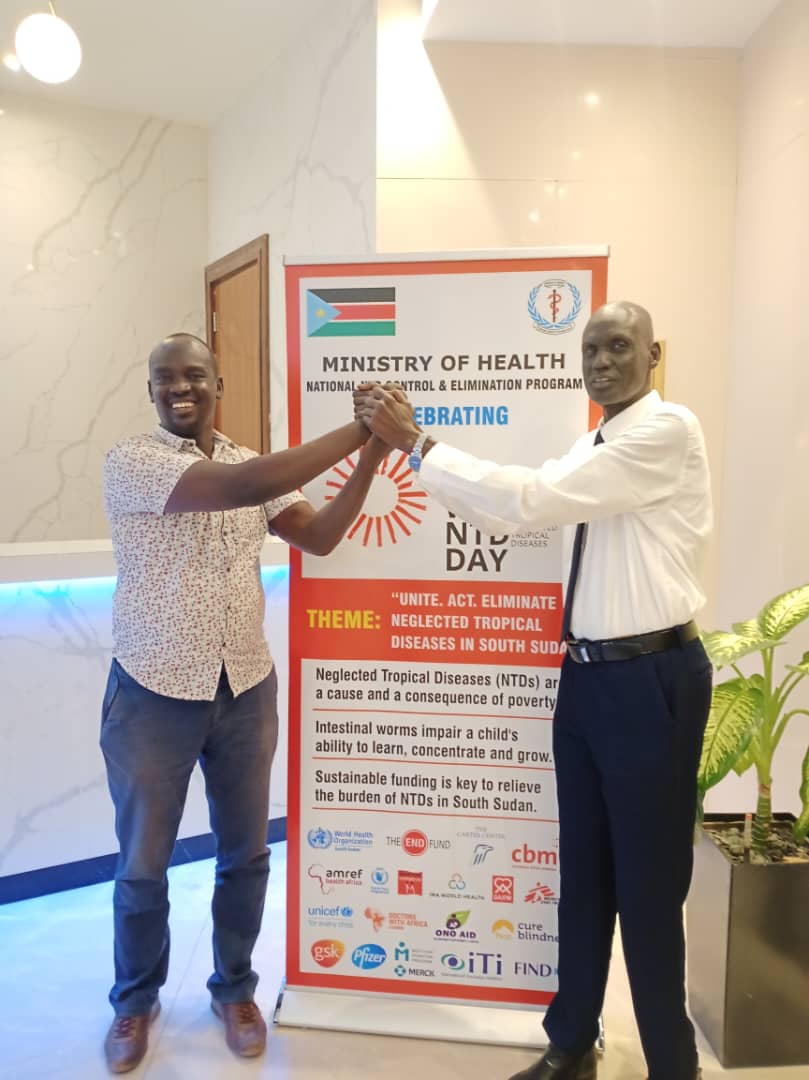
My name is Yak Yak Bol and I used to evacuate the wounded. My job consisted of evacuating wounded people to the orthopedic hospital that was established by the ICRC in Lokichogio, located in the northern Turkana area of Kenya. At the time, the Kenyan government had allocated Lokichogio to host the biggest refugee camp – south of which is what is now the biggest refugee camp known as Kakuma.
I studied clinical medicine and joined the school of Public Health shortly after. Immediately after I finished school, I joined the workforce and started what became a career in the Public Health sector.
In 2007, I became State Coordinator for the disease popularly known as Guinea Worm, working with the Ministry of Health in Warapp, one of the current ten states in South Sudan.
At the time we had about a hundred thousand cases in the state I was working in and we were supported by the Carter Center alongside the National Ministry of Health.
We were tasked with setting up a surveillance system which was up and running three years later with a robust community based surveillance system for Guinea worms in Warrap state. By 2010, the cases had significantly reduced and we were commended for having done a good job at getting the numbers down from the beginning of the eradication program; this was a cornerstone to the growth of my career.
After the successful results of Warrap state vis-à-vis the guinea worm eradication were announced, I was told by the Minister of Health that I had done a good job and asked to join the Ministry at the National level.

By the end of 2010, I was transferred to Juba and assigned to be the Assistant Surveillance Director for the National Guinea worm eradication program. My main objective was to oversee two states who had already interrupted the guinea worm transmission but that required active surveillance as a follow-up.
You can say my expertise lies within guinea worm because of my extensive experience with the program both at the state and national level which is how I ended up being assigned the role of the National Coordinator for Guinea worm. I have worked in various capacities for the guinea worm eradication program including the monitoring and evaluation section.
After which the natural progression seemed to have been the role of the National Coordinator of PC NTDs for South Sudan’s Ministry of Health. It baffles me to think that I went from focusing on 1 disease for so long – two decades to be exact – to overseeing the elimination plans for 5 NTDs. A little over a year later, I realize the great responsibility that lies on my shoulders and feel very honored that I get to work for my community and for my country.
The journey of NTD elimination in South Sudan isn’t an easy one and it is often obstructed with many obstacles and challenges. The first of the many challenges that we face when leading the NTD programs, is insecurity. From the moment I assumed my current position, I often find myself explaining how unique South Sudan is because of the different types of challenges that we are dealing with; and insecurity changes the situation on the ground regularly.
Regular security monitoring by the National Security organ is conducted and we rely heavily on their updates to conduct our work, because sometimes, the violence could last only a few weeks but other times it can unfortunately go on for months. That being said, I am grateful that for the past two years none of our staff have been harmed and our resources have remained safe and it’s all thanks to the collaboration of all of the various actors. But, when conflict lingers we are forced to stop our activities which is making us hold off on life changing treatments but we adapt.
We adjust our strategies and our plans according to the situation on the ground almost daily despite the constant financial constraints that challenge us. Progress however is progress and with the funding we’ve been able to secure thus far, we have managed to carry out the trachoma disease mapping of South Sudan which is a great step for us and a successful achievement that I am very proud of.
“It all began when I joinged the ICRC as a medavac over 20 years ago in Bahr el Gazal the main western tributary of the Nile, bordering Central African Republic in the west.”
Witnessing the reduction of inflamed trachoma that we refer to as TF [Trachomatous Inflammation – Follicular] when conducting surveys, was a confirmation that our work was indeed impactful because we’ve now stopped the mass drug administration in one of the identified areas in South Sudan. This only means that slowly we will be able to reduce the number enough not to require any trachoma intervention and I long to see that day.
My greatest achievement so far is the level of commitment we have been able to gather from the schools and the students when we set out to raise awareness on Trachoma and the importance of facial hygiene.
It warmed my heart to see the establishment of ‘Anti-Trachoma’ clubs in the schools composed of students who have done a great deal of the work to share information and to educate the communities they live in – that’s how we’ve been able to change attitudes and behavior, gradually. For example, the construction of latrines in the schools has inspired children not to opt for open defecation; this means that with the construction of public latrines in the neighborhoods they live in, they can lead by example.
My childhood was scarred by the constant cases of blindness that we encountered on the regular. My work with the Ministry allowed me to see the various causes of blindness in South Sudan and in addition to Trachoma, Onchocerciasis was another burden that we needed to rally against, because they are the biggest threat to our population.

‘Why is South Sudan burdened with Onchocerciasis’ is a question I often ask myself and through time I started understanding the main factor is the topography of my country. We have running rivers, so many rivers in so many locations and thick, dense forests throughout South Sudan that create the perfect breeding ground for the onchocerciasis vector known as the black fly. The hardest challenge with the black fly is that it flies, and long distances at that so as long as it has the conducive environment to breed, it will continue to spread the infection among the population far and wide. We are sadly unable to control this phenomena because it requires resources that we currently don’t have but I am hopeful that we will be able to eventually conduct assessments in order to determine the transmission areas in South Sudan.
When I go to a lot of the villages in my country, the majority of the inhabitants are blind and my heart sinks when I think about how difficult it is for them to sustain themselves within the South Sudan context. What usually happens is that younger children are taken out of school to assist their affected family members, which contributes to a continuous cycle of economic strain and burden in the country. I can’t of course do this by myself and working together with the NTD community in South Sudan but also with the strong collaboration with bordering countries is something that I am hopeful we will manage to achieve great results from. I want to work to make sure that we stop the spread of the diseases and reduce the challenges for my people.
The work that Yak Yak and the Ministry of Health of South Sudan has been doing was recently featured in the City Review. Click here to check out the full feature.



